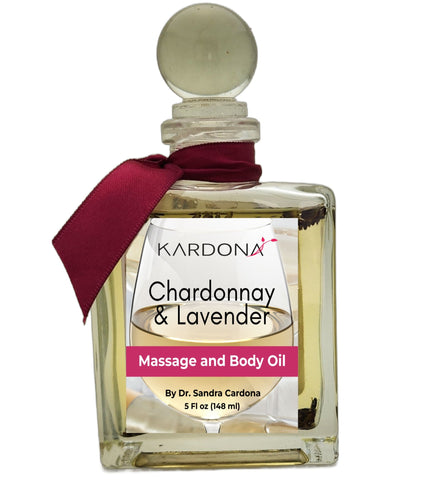The Ultimate Guide to Silky, Soft Feet La guía definitiva para unos pies suaves y sedosos
The Ultimate Guide to Silky, Soft Feet: Pamper Your Feet with Kardona Beauty
Our feet carry us through life, yet they are often neglected when it comes to self-care. Dry, rough, or cracked feet can be uncomfortable and even painful, but with the right care—and the power of fine ingredients—you can achieve silky-smooth feet effortlessly. Kardona Beauty brings you premium foot care infused with the elegance of Chardonnay wine, sea salt, grape oils, and other luxurious botanicals, designed to exfoliate, hydrate, and rejuvenate your feet.
1. Exfoliate with the Kardona Chardonnay Foot Scrub
Exfoliation is the key to removing dead skin and preventing rough patches. Kardona Beauty’s Chardonnay Foot Scrub is formulated with:
🍷 Chardonnay Wine Extract – Rich in antioxidants to combat dryness and promote skin renewal.
🧂 Sea Salt Crystals – Gently buff away dead skin cells for a fresh, smooth finish.
🍇 Grape Oils & Fine Botanicals – Deeply nourish and revitalize tired feet.
How to use:
- Apply the scrub to damp feet, focusing on heels and rough areas.
- Massage in circular motions for a luxurious exfoliating experience.
- Rinse with warm water to reveal instantly softer skin.
2. Hydrate & Lock in Moisture with Kardona Foot Oils
After exfoliation, moisturizing is essential to maintain soft, supple skin. Kardona’s luxurious foot oils, enriched with premium botanicals, provide deep hydration while sealing in moisture.
✨ Why Kardona Foot Oils?
- Infused with antioxidant-rich grape seed oil, promoting elasticity and hydration.
- Contains nourishing essential oils to soothe and refresh tired feet.
- Leaves skin feeling silky-smooth without greasiness.
How to use:
- After showering or soaking your feet, apply a few drops of Kardona Foot Oil and massage gently.
- For an overnight treatment, wear cotton socks to enhance absorption and wake up to baby-soft feet.
3. Soak Your Feet for Ultimate Relaxation
A luxurious foot soak preps your skin for exfoliation and hydration. Try this DIY Kardona-inspired foot soak:
🛁 Warm water to relax and soften the skin.
🍷 A splash of wine or grape extract for antioxidant benefits.
🧂 Sea salt to detoxify and relieve tired feet.
🌿 Lavender or rosemary oil for a calming spa-like experience.
Soak for 15-20 minutes, then exfoliate and follow up with Kardona Foot Oil for the ultimate pampering session.
4. Keep Your Feet Healthy & Beautiful
🌟 Trim your nails regularly and apply cuticle oil for nourishment.
🌟 Wear breathable shoes and moisture-wicking socks to prevent dryness and irritation.
🌟 Give yourself a foot massage with Kardona Foot Oil to improve circulation and reduce tension.
Step into Luxury with Kardona Beauty
Indulge in the elegance of wine-inspired skincare and give your feet the care they deserve. With Kardona’s Chardonnay Foot Scrub and nourishing Foot Oils, you can enjoy silky-soft, beautifully pampered feet every day.
✨ Your feet carry you through life—treat them with luxury.
La Guía Definitiva para unos Pies Suaves y Sedosos: Mímate con Kardona Beauty
Nuestros pies nos sostienen cada día, pero muchas veces los olvidamos en nuestra rutina de cuidado personal. La sequedad, la aspereza y las grietas pueden ser molestas y dolorosas, pero con el cuidado adecuado—y el poder de ingredientes finos—puedes lograr pies suaves y sedosos sin esfuerzo. Kardona Beauty te ofrece un cuidado premium para los pies, inspirado en el lujo del vino Chardonnay, la sal marina, aceites de uva y otros ingredientes botánicos exquisitos, diseñados para exfoliar, hidratar y rejuvenecer tus pies.
1. Exfolia con el Exfoliante para Pies con Chardonnay de Kardona
La exfoliación es clave para eliminar células muertas y prevenir zonas ásperas. El Exfoliante para Pies con Chardonnay de Kardona Beauty está formulado con:
🍷 Extracto de Vino Chardonnay – Rico en antioxidantes para combatir la sequedad y promover la renovación celular.
🧂 Cristales de Sal Marina – Exfolian suavemente, dejando la piel renovada y fresca.
🍇 Aceites de Uva y Botánicos Finos – Nutren profundamente y revitalizan los pies cansados.
Cómo usarlo:
- Aplica el exfoliante sobre los pies húmedos, enfocándote en los talones y áreas ásperas.
- Masajea con movimientos circulares para una exfoliación lujosa.
- Enjuaga con agua tibia y disfruta de una piel más suave al instante.
2. Hidrata y Sella la Humedad con los Aceites para Pies de Kardona
Después de exfoliar, es fundamental hidratar para mantener la piel suave y flexible. Los Aceites para Pies de Kardona, enriquecidos con botánicos premium, proporcionan una hidratación profunda sin dejar sensación grasosa.
✨ ¿Por qué elegir los Aceites para Pies de Kardona?
✔ Infusión de aceite de semilla de uva, que promueve la elasticidad y la hidratación.
✔ Contiene aceites esenciales nutritivos que calman y refrescan los pies cansados.
✔ Deja la piel suave y sedosa, sin residuos pesados.
Cómo usarlo:
- Después de la ducha o un baño de pies, aplica unas gotas del Aceite para Pies de Kardona y masajea suavemente.
- Para un tratamiento intensivo, usa calcetines de algodón durante la noche y despierta con pies de bebé.
3. Relaja tus Pies con un Baño Hidratante
Un baño de pies prepara la piel para la exfoliación e hidratación. Prueba este baño de pies inspirado en Kardona:
🛁 Agua tibia para relajar y suavizar la piel.
🍷 Unas gotas de vino o extracto de uva para beneficios antioxidantes.
🧂 Sal marina para detoxificar y aliviar la fatiga.
🌿 Aceite esencial de lavanda o romero para una experiencia relajante de spa.
Remoja tus pies durante 15-20 minutos, luego exfolia y aplica el Aceite para Pies de Kardona para un cuidado completo.
4. Mantén tus Pies Saludables y Hermosos
🌟 Corta tus uñas regularmente y aplica aceite para cutículas para mantenerlas nutridas.
🌟 Usa calzado transpirable y calcetines que absorban la humedad para evitar sequedad e irritación.
🌟 Regálate un masaje con el Aceite para Pies de Kardona para mejorar la circulación y reducir la tensión.
Luce unos Pies de Ensueño con Kardona Beauty
Mímate con el lujo de un cuidado inspirado en el vino y dale a tus pies el cariño que merecen. Con el Exfoliante para Pies con Chardonnay y los Aceites para Pies de Kardona, disfrutarás de unos pies suaves, hidratados y radiantes todos los días.
✨ Tus pies te llevan a todas partes—trátalos con el lujo que merecen. ✨












